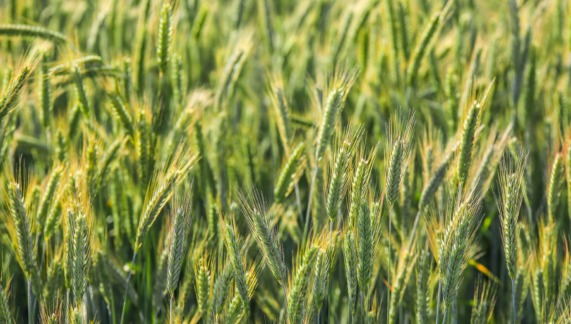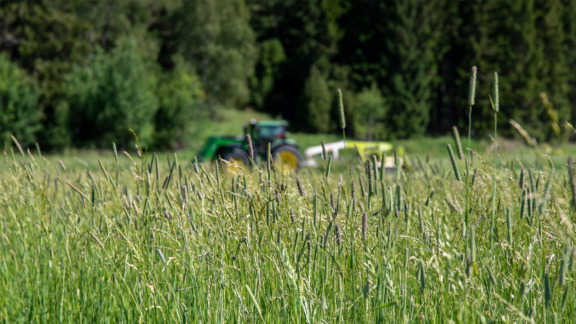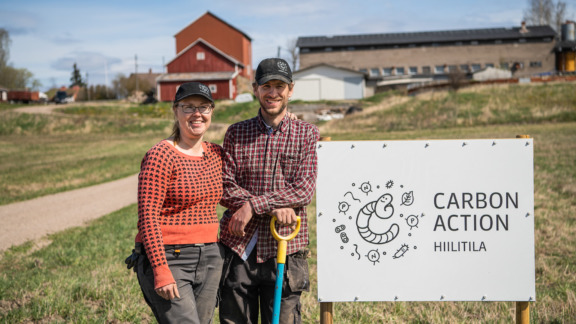REGENERATIVE FARMING IS MORE THAN CARBON FARMING
Regenerative farming is a way of producing food that benefits both farmers and the environment. It improves soil health, boosts carbon sequestration, and supports biodiversity. Carbon farming is part of regenerative farming, and can help farmers mitigate climate change. Healthy soils produce good harvests and decrease the need for purchased off-farm inputs for production. This will improve the security of supply throughout society.
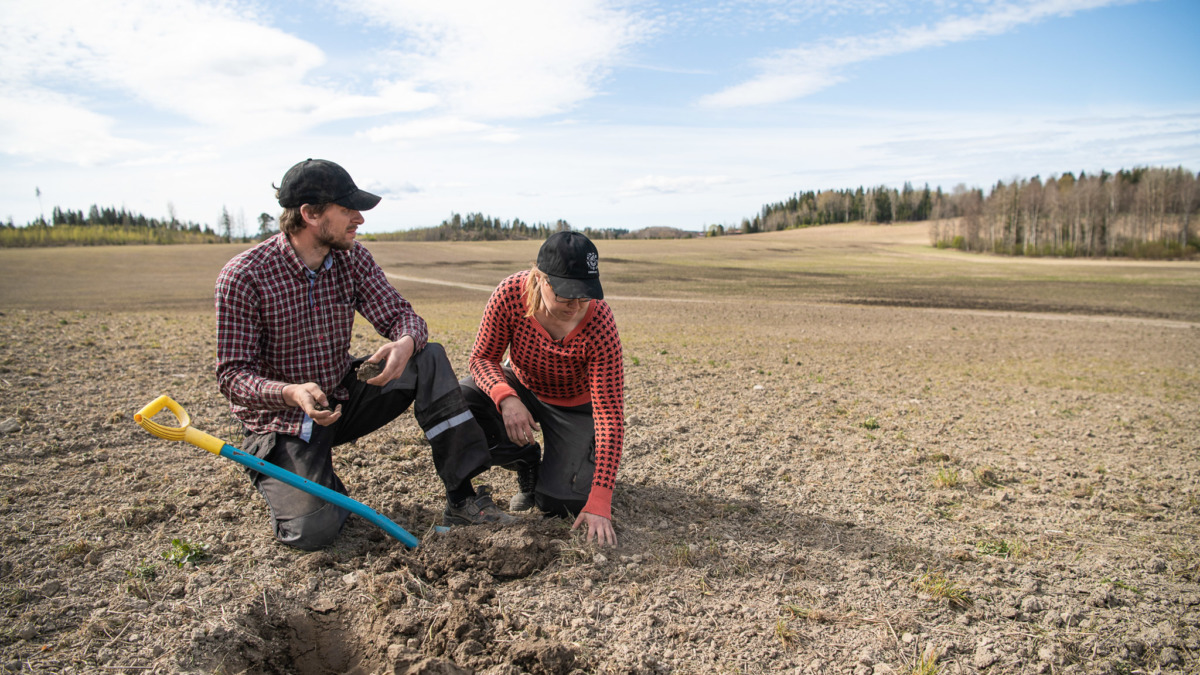
Soil health is at the heart of regenerative farming
Regenerative agriculture is a holistic approach to food and farming systems that revitalises the entire ecosystem. In practice, this means that you are not merely aiming for a good harvest – you are also seeking to improve soil health, increase biodiversity and the soil’s carbon stock, and ensure effective water management.
Regenerative agriculture is much more than just carrying out individual measures and is not a specific practice itself. It is not only what you do but how you do it. Regenerative agriculture offers a flexible way of applying a diverse range of adaptive farming practices, that is, to pick the method that best fits the situation.
However, the potential measures can be simplified into three main principles: maximising photosynthesis, maximising microbial activity in the soil, and minimising the disturbance of soil functions. Tillage and the use of chemical agents are two examples of farming practices that disturb soil functions.
Regenerative agriculture is food production that improves soil health and the well-being of the whole environment.
TERMS USED IN REGENERATIVE AGRICULTURE
Food and environmental benefits from the same fields
By improving soil health from one growing season to the next, rather than letting the soil deteriorate, we can generate many benefits for farmers and the environment. Removing carbon from the atmosphere and re-storing it in the soil is a tested benefit of regenerative agriculture.
Increasing the soil’s carbon stock while producing food is also called carbon farming. When carbon is stored in the soil, it increases the field’s humus content and helps mitigate climate change.
Better crop safety and reduced input will be positively reflected in the farm’s finances. A field in good shape retains water and nutrients and reduces erosion. It is also more resilient to extreme weather phenomena. Keeping valuable topsoil in the field and ensuring a well-functioning nutrient cycle will save money and prevent eutrophication in the Baltic Sea.
Maximising carbon storage, maximising biodiversity, minimising emissions into bodies of water, and ensuring effective water management are both the objectives of regenerative farming and the means it employs.
Regenerative farming criteria
As consumers’ interest in the origin of their food continues to grow, the many benefits of regenerative farming have also been noticed by companies in the food chain. The companies have a need to monitor the progress and actions of their contract farmers. To address this need, we have developed a set of criteria for regenerative farming and a learning pathway for farmers.
In Finland, the principles and measures used in regenerative agriculture are being promoted via our Carbon Action project, which also involves key companies in the Finnish food system.
Soil structure can be improved, and harvests can be obtained at the same or lower costs. Farms of all sizes in any production sector can take a regenerative approach to farming.
Riitta Lehtinen, farmer, Miekon-Liski, Tammela
The principles of regenerative farming
Regenerative farming can be summarised in three principles: maximising assimilation, maximising soil microbial activity and minimising soil disturbance.
The good condition of the field and water management are the basis of good soil health. If your field is experiencing serious soil health issues, it is worth trying to identify and correct any problems. Water management must be in good order, and there must be no standing water in the field. Remove any compactions, as water and oxygen do not circulate properly, and microbial activity is weak in compacted soil.
A plant coverage for as much of the year as possible and a versatile crop rotation protect the soil from erosion and nutrient leaching. These measures will improve soil structure, humus content, and microbial biodiversity. Healthy microbes also help to keep the plants healthy.
You can enhance the biodiversity of the field by, for example, establishing wildflower strips and beetle banks. Attracting pollinators will also increase your chances of a successful harvest.
Intense tillage and the abundant use of chemicals disturb microbes and microorganisms in the soil. Conversely, using catch crops and versatile crop rotation promotes microbial activity.
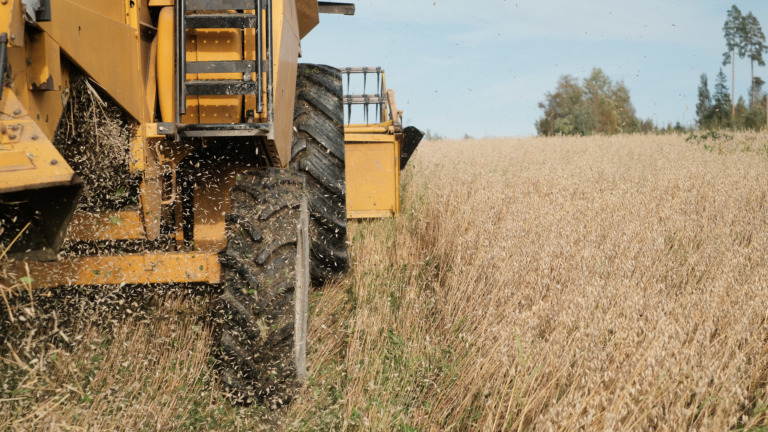
Natural processes benefit farmers
In nature, all processes are connected – and agriculture can either strengthen or weaken them. Regenerative farming aims to support natural processes while enhancing crop yields.
Depending on the situation, supporting natural processes may also be reflected as additional income, savings, or other intangible benefits.
Biodiversity is an essential aspect of regenerative farming. Biodiversity in arable land strengthens the ecosystem’s ability to adapt to change. It also provides many beneficial ecosystem services, such as plant pollination, nutrient cycling, and pest and water management.
Arable land full of life is teeming with microbes that decompose organic matter and store carbon. Many farmers actively manage their subterranean livestock by adding organic matter to the field and minimising any disturbance to these organisms.
A diverse range of organisms in the soil plays an essential role in maintaining the soil functions of arable land. It is also a key factor in the health of both soil and plants and in storing carbon in the soil.
Focusing on soil health is an exciting and promising approach, as you can achieve good results in only a few years
Nina Långstedt, farmer, Krämars Farm, Inkoo
Regenerative farming for future food security
Agriculture is in continual flux due to climate change, economic pressures, changing agricultural policy, and various health and security threats.
Both farmers and fields need a great deal of resilience; that is, they must be able to remain functional under varying conditions. Regenerative farming is one way of increasing the resilience of individual farms and society.
Introducing new methods will always require a little bit of investment in learning and experimentation. However, no major financial investments are required, and any investments will pay themselves back in time. The easiest way to start is by trying a few small experiments and reading up about what others are doing.
The prospect of improved profitability can motivate farmers to keep going, as there is a great deal of uncertainty in agriculture, and the number of farms continually decreases.
Being able to influence the productivity of your fields brings an increased sense of autonomy, which also helps farmers cope. All this works together to safeguard Finland’s supply security – now and in the future.
CONTACT US



